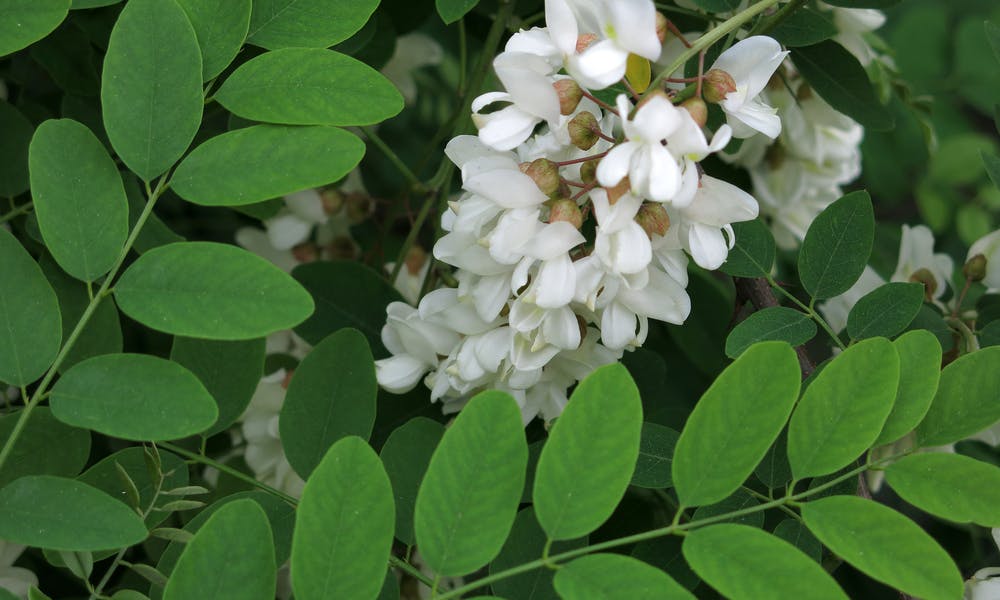Acacia is one of the very few flowering plants that can be found throughout the world. Acacia is loved on all continents, for its beauty, and for its beneficial uses, but is especially famous in Australia, where it is named wattle. Since 1988, wattle has been declared the floral symbol of this state. In Australia, spring is announced by the first flowering of acacia and, on the 1st of September 1992, it was declared National Wattles Day. In this article, we explore the following topics:
* Origin, history, and evolution of acacia flower
* What is acacia flower?
* How to grow and care for acacia flower
* What are the uses of acacia flower
Origin, History, and Evolution of Acacia Flower
Acacia belongs to the Fabaceae family, originating from tropical and subtropical regions, mainly from Australia and Africa.
Acacia is the most widespread plant in the group of vascular plants. The word acacia comes from the Greek word “akis,” which means point or beard. The word “wattle” originates from an old Teutonic word in Old English, this word was used to designate the woven branches that formed fences, walls, and roofs.
There are 1350 Acacia species worldwide, of which 1000 are found on the Australian continent. Acacia is known from prehistoric eras, testimonies are from tertiary deposits in Switzerland, Paris, West Georgia or Abkhazia. There is proof that acacia has been known on the Australian continent for 20 million years. Acacia shrub is very common in the African landscape. For thousands of years, the nomadic tribes in the desert have relied on these shrubs for tribal laws and spiritual practices, and for the territorial organization.
For Victorians, the yellow flower of acacia meant the symbol of secret love and its gift implies a deep friendship. It is said, in popular belief, that burning the acacia bark drives away evil spirits.
What Is Acacia Flower?
The botanical name of Acacia is Acacia pycnantha and in Europe and America, acacia is often called a mimosa. Acacia shrubs are present in all terrestrial habitats, including in tropical regions, in alpine areas, and in deserts. In Australia, the second most widespread forest is the acacia forest, after the eucalyptus, holding about 8% of the total area of the forest.
Acacia blooms in spring or summer and the flowers are small, colored with shades of pale cream to golden yellow, are very fragrant and with many stamens. There are species of acacia with red or purple flowers. Acacia flowers are arranged in inflorescences, with three up to 130 little flowers that can have globular or cylindrical ends.
Acacia leaves vary from light or dark green to blue or gray – silver and are small, finely divided. Many acacia flowers do not produce nectar. However, the leaves produce a sugary substance that attracts many insects.
Acacia seeds are produced in the form of pastes, which are of great help in identifying acacia species. A special species of acacia is an umbrella species that grows in Africa. Its leaves are much preferred by the giraffes, but the shrub offers shelter and food to the ants.
How To Grow and Care for Acacia Flower
Some species of acacia are cultivated as garden ornamental plants. The acacia shrub can be grown either from seeds or from cuttings or by grafting. They are pollinated by insects.
Check the following sections for a few hints and tips on how you can successfully grow an acacia plant with beautiful blossoms:
* Choose a well-drained and weed-cleaned place to plant your ornamental acacia flower.
* Dig a hole about twice as long as the depth of the pot, fill the hole twice with water, and wait each time for water to drain.
* Remove the plant from the pot and cut off the curved roots, place it in the already prepared hole, cover with soil, and until the plant is established, you should water the plant once a week.
* Acacia is not a pretentious shrub and does not need fertilizers in particular, and grows very well in most dry soils. The soil should be covered with pine bark, around the roots of the plant or other available material to prevent drying.
* After the plant blooms, take care every year to clean the plant by cutting the branches that are not needed.
* Be careful not to leave Acacia shrubs in their pots for too much time, because their roots grow at a very fast rate.
What Are the Uses of Acacia Flower
The seeds of some acacia species have a high nutritional value. Some resemble the seeds of cereals and they taste similar to walnuts; other types have a taste like lentils when boiled. You can make flour for bread or for pasta from acacia seeds.
The fragrant acacia flowers are used in the perfume industry. The innocent odor of mimosa has a special value of floral perfumes such as Champs Elysees by Guerlain, but the odor of the mimosa flower is quite evasive and is usually used as an accent and not as a theme.
In South Africa, Zambia or Angola, you can often find acacia that blooms during the summer, shrubs which live a very long time, up to 30-40 years. This acacia type produces a cake shop product called Cape Gum. Also, honey produced from the pollen of the acacia flower is very healthy. Acacias are widespread in south-east Africa, where several species are very economically important, as they contribute to the manufacture of Arabic gum and tannin.
Acacia wood was used by Australian aborigines to build their houses. Also, in the medical field, there are many uses. In the 19th century, it was used as a cure for rabies.
All in all, the acacia flower is very popular in Australia and has a long, beautiful history. It is not a pretentious plant and it can make a great addition to any garden.
